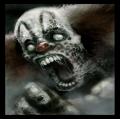» Site Navigation

1 members and 649 guests
Most users ever online was 47,180, 07-16-2025 at 05:30 PM.
» Today's Birthdays

» Stats

Members: 75,910
Threads: 249,115
Posts: 2,572,187
Top Poster: JLC (31,651)
Welcome to our newest member, coda
|
-
Registered User


normal gene?
is there a normal gene in every ball python. for example if you breed two pieds is there a chance to get a normal looking one or do you get all pieds?
-
-
-
-
-
-
Registered User


Re: normal gene?
so if i understand this right
recessive to recessive= recessive
recessive to normal= het
het to het= normal, het, and recessive
-
-
Re: normal gene?
 Originally Posted by travisgoldkuhl

so if i understand this right
recessive to recessive= recessive
recessive to normal= het
het to het= normal, het, and recessive
In a tight little nutshell....yeah. 
-
The Following User Says Thank You to JLC For This Useful Post:
-
Re: normal gene?
 Originally Posted by travisgoldkuhl

so if i understand this right
recessive to recessive= recessive
recessive to normal= het
het to het= normal, het, and recessive
Here's another to add to your list:
recessive to het= het & recessive
-
-
Re: normal gene?
It's important to remember that a ball python is made up of a LOT of different genes all working together--different genes code for different parts of the colors and patterns and other traits that make a ball python what it is.
So, when we talk about a 'normal gene', we mean that the gene in question is similar to what ordinary-looking ball pythons have--it's not mutated.
Our morphs have mutant genes--genes that have changed and become different.
Genes always come in pairs.
It's not always the same gene that has mutated. A single gene mutation is responsible for amelanism, for example--a lack of the color black in the animal's skin. Melanin is not produced when this gene is altered. However, in order to produce melanin, the animal only needs one copy of the correct gene. As a result, you only get an animal with no black when both copies of the gene are mutated. When only one is mutated, you get a 'het'--a heterozygous animal that looks normal, but carries a copy of the mutant gene. In a het, the other copy of the gene is normal.
In a homozygous animal, because both copies of the gene are mutant, and there only ARE two copies of any given gene, there is no normal copy of the gene.
I hope this was coherent and helped.
-
The Following User Says Thank You to WingedWolfPsion For This Useful Post:
 Posting Permissions
Posting Permissions
- You may not post new threads
- You may not post replies
- You may not post attachments
- You may not edit your posts
-
Forum Rules
|